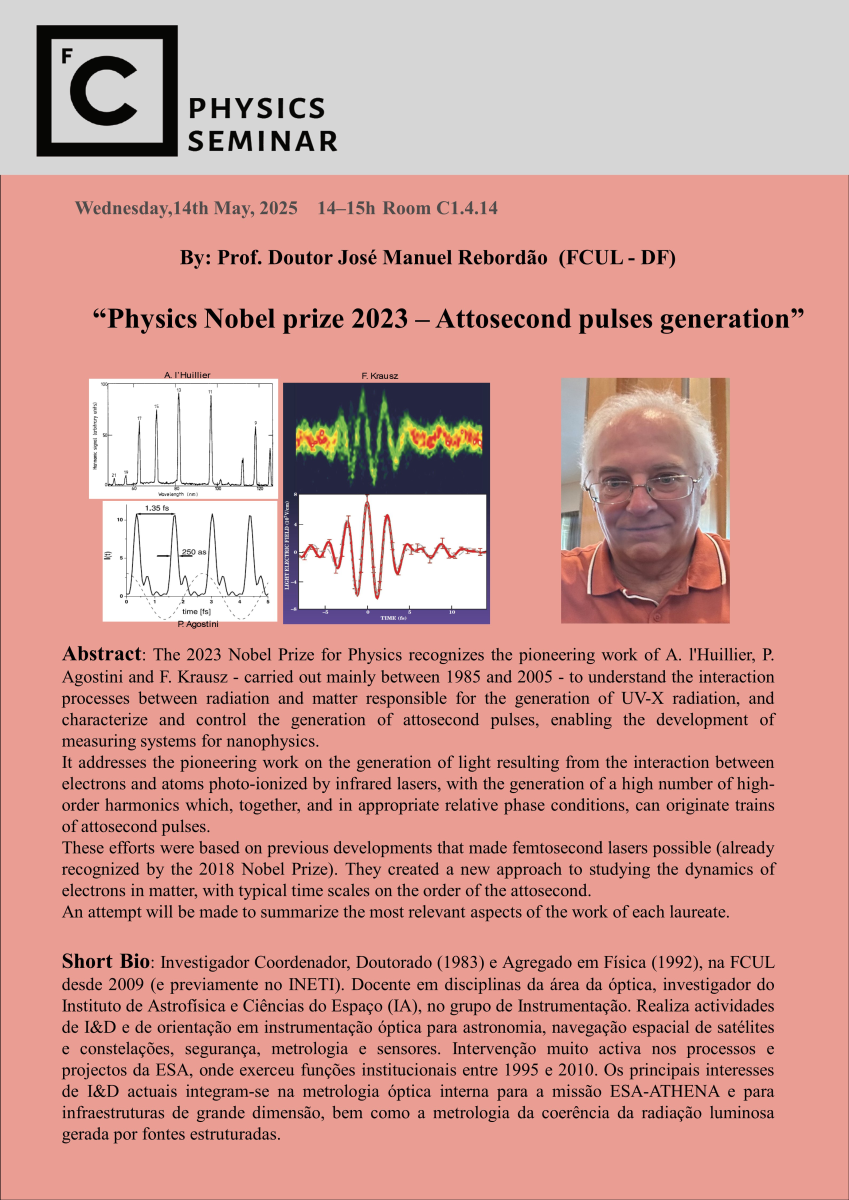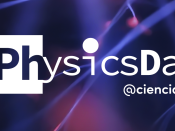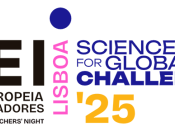Por José Manuel Rebordão (FCUL - DF).
The 2023 Nobel Prize for Physics recognizes the pioneering work of A. l'Huillier, P. Agostini and F. Krausz - carried out mainly between 1985 and 2005 - to understand the interaction processes between radiation and matter responsible for the generation of UV-X radiation, and characterize and control the generation of attosecond pulses, enabling the development of measuring systems for nanophysics.
It addresses the pioneering work on the generation of light resulting from the interaction between electrons and atoms photo-ionized by infrared lasers, with the generation of a high number of high-order harmonics which, together, and in appropriate relative phase conditions, can originate trains of attosecond pulses.
This effort was based on previous developments that made femtosecond lasers possible (already recognized by the 2018 Nobel Prize). They created a new approach to studying the dynamics of electrons in matter, with typical time scales on the order of the attosecond.
An attempt will be made to summarize the most relevant aspects of the work of each laureate.


























